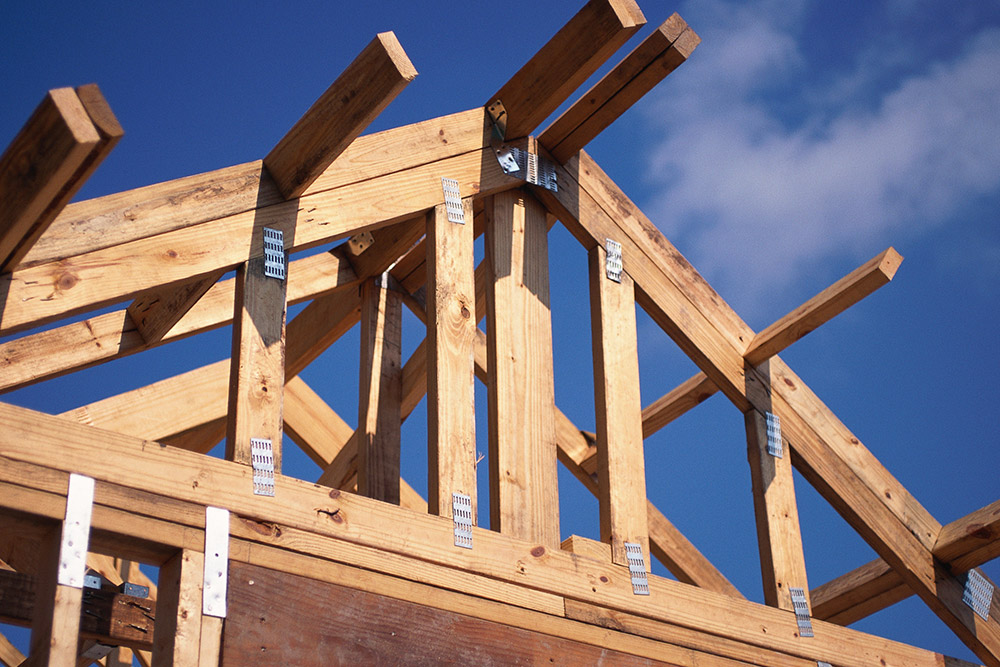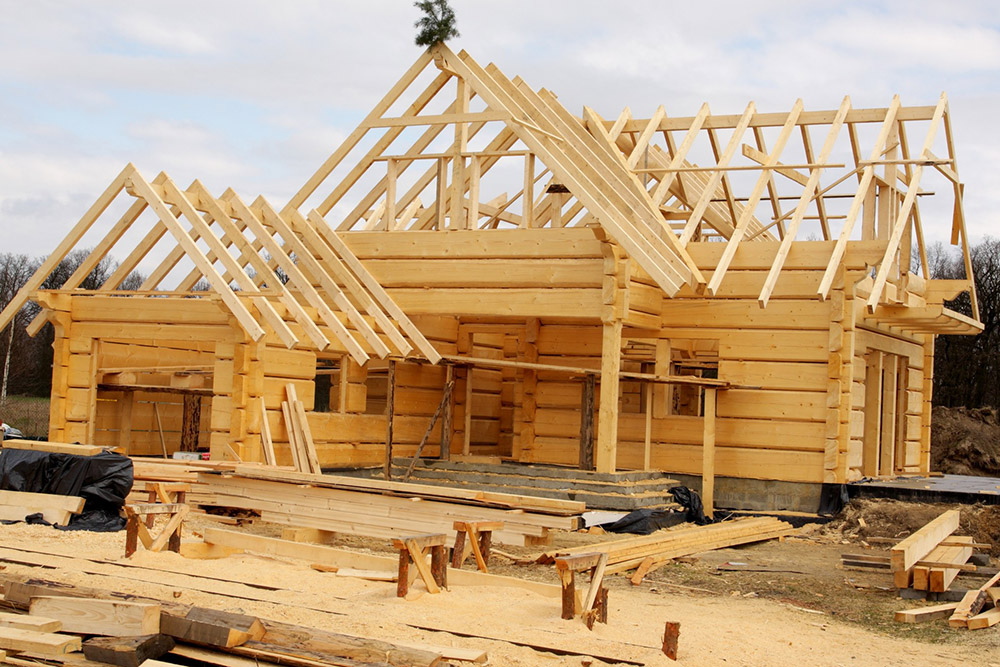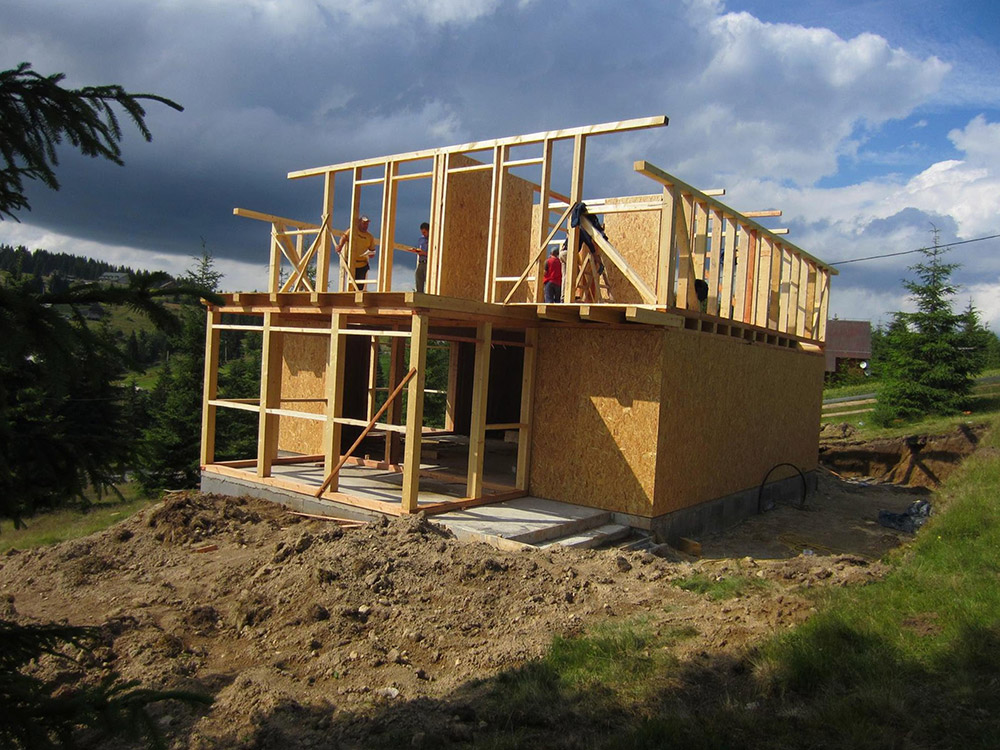Frame houses-features and technology
I want to perform the construction of a summer cottage or a summer house quickly. At the same time, saving time should not affect the quality of the structure. It should be warm, comfortable and cozy inside. Thanks to modern technologies, this is quite real today.

If you want to build a house that is not intended for permanent residence, but still make it durable and warm, pay attention to the new technology. Such houses are still commonly called "summer", but in fact they are heated, although they do not require significant energy consumption. There is no need to live here all year round, but still the structure is strong and reliable. The house is heated by a Bulerian oven, which saves your money.
The design involves the construction of a strict-shaped building, modest enough to be able to perform all the work independently. The modern finishing material block-house is used as the facade cladding. It imitates a natural wooden beam, has all the advantages of natural wood, as well as increased strength characteristics. The aesthetic appearance gives the house respectability.
Foundation
The construction of the house consists of light elements, so that there are no increased requirements for the arrangement of the foundation. You can choose one of the types of foundation:
- Tile – made of lightweight reinforced concrete slab.
- Lightweight ribbon.
- Columnar is the most optimal and inexpensive option, but in this case it will not be possible to organize a subfloor.
When choosing the type of foundations, it is also important to take into account the condition of the soil on the site where the work will be carried out.

Frame
In a summer house, it can be built from wooden floors. First, the strapping from above and below is arranged, then the walls, struts and other elements are arranged. Between them, they are already planning the location of openings for cutting down window and door openings.
The load-bearing elements are mounted at a distance of 50 to 150 cm from each other, while not forgetting to take into account the planned dimensions of doors and windows. The corner elements should be more durable. If the racks in the row are made of boards, then the corner racks are made of thicker bars.
The base of the entire structure is the lower binding, which is assembled from logs. The corners are joined by a "straight lock" method the size of half a tree. Most often, the frame is attached to the binding with nails. The binding can be made of one or two crowns, it depends on the method of arranging the floor. If the beams will rest on the pillars, one crown is enough.
Plank guides are placed between the racks, which give the structure rigidity. Beams or boards are placed on top of the racks, nailing them with nails. Another option is to use ceiling beams on straight spikes.

Walls
The walls consist of wooden boards, the exterior facade is sheathed with modern block-house material. A fiberglass or basalt fiber insulation is laid between the skin and the frame. interior wall decoration-e-o plasterboard slabs. This eco-friendly material allows you to quickly align the walls and prepare them for subsequent finishing.
Any house, even a summer residence, must meet certain requirements. It should be warm, dry, comfortable for living. Insulation is a material that accumulates moisture. In any case, heat steam will flow from inside the house, so that due to the temperature difference, condensate is formed. All the cracks and joints, especially small ones, are simply impossible to seal up. And the moisture in the insulation can reduce its thermal insulation characteristics. To prevent the problem, you need to do the following:
- Use vapor barrier materials. When laying the insulation, lay a parchment or a membrane that will not allow moisture to pass to the material. In this case, building a house will cost more. Some people use plastic wrap, but it does not allow the walls to breathe, the air inside the house can become musty and stale.
- Waterproofing. On top of the insulation, a hydro - and vapor-insulating membrane is laid, which protects it from the effects of environmental factors. The membrane is an inexpensive material that at the same time provides reliable protection from cold, wind, and temperature fluctuations. The advantages of the membrane also consist in the fact that it allows you to release steam from the inside, which guarantees free air exchange and, as a result, a favorable microclimate in the house. Sometimes the membrane is even used as a temporary roof. It is quite capable of serving up to four months. In a word, it is an indispensable material in modern construction.
The construction of walls using steam and waterproofing insulation does not exceed 20 cm in thickness. At the same time, one heater of 1 kW per 50 sq. m is enough inside the house to maintain a temperature of +20 degrees at zero on the street.
Conducting communications
It is recommended to leave some space between the plasterboard inside the room and the external facade. The gap is made by mounting the crate. Due to the distance between the insulation and the inner wall, the risk of wet spots on the walls, which can appear with a temperature difference, is reduced. The second task that can be solved with the help of a crate is the availability of space for conducting communications inside the walls – water and electric networks.

Additional rooms in the house
Usually a country residence has a small area-about 50-60 square meters. meters. inside the house is divided into two bedrooms, a kitchen, a corridor, a bathroom. Additional space can be obtained in the attic of the building. If you make a gable roof, insulate it and use a membrane in its arrangement, then one or two rooms will turn out in the attic space. The windows will be located in the gables, and you will get a full-fledged attic floor.
Water supply and heating networks
When arranging the water supply network, it is important to provide for the exit of the water pipe from the foundation in advance. The pipe outlet must be below the ground freezing level. One end goes outside the house, the other-inside the basement. You can arrange a water supply system by connecting a pump to a well or well. The hose released from the house should be sent to the septic tank or gutter.
The heating system needs to be thought out in advance. The technological gap between the inner and outer wall can also be used for heating pipes. However, recently, more and more people are choosing eco-friendly living heat, especially in a country house. You can install a wood-burning stove, the heat from which can not be compared with any other source. If you decide to install a stove, then you should make a separate foundation for it. You can put a round stove in the center of the house, which will heat all the rooms at once.
This is just one of the options for building an inexpensive, but warm summer house. In particular, for the installation of the frame, instead of wood, you can use a more modern material – a fiberglass profile. For facade cladding, not only a block house is suitable, but also, for example, siding. The choice is always yours.
Pub date: 2017.05.01